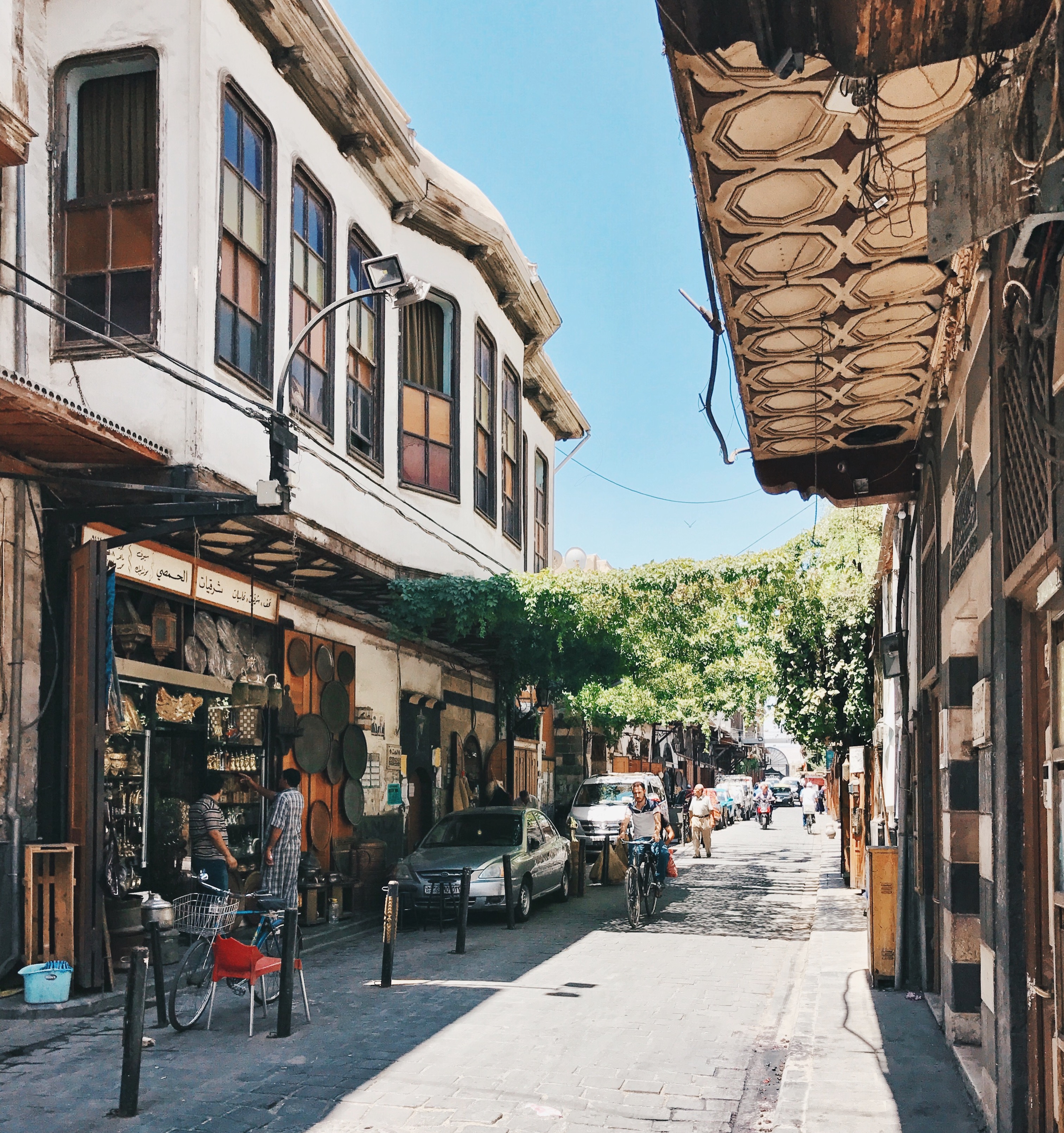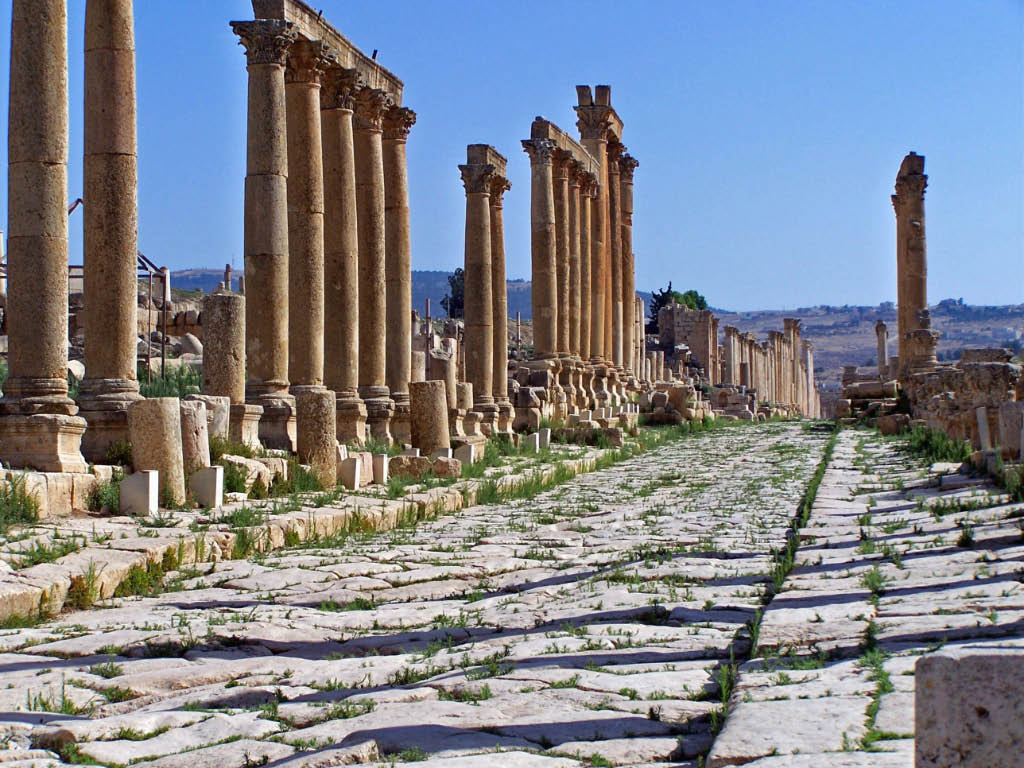|
Medina Of Tunis
The Medina of Tunis is the medina quarter of Tunis, the capital of Tunisia. It has been a UNESCO World Heritage Site since 1979. The Medina contains some 700 monuments, including palaces, mosques, mausoleums, madrasas and fountains dating from the Almohad and the Hafsid periods. History Founded in 698 around the original core of the Zitouna Mosque, the Medina of Tunis developed throughout the Middle Ages. The main axis was between the mosque and the centre of government to the west in the kasbah. To the east this same main road extended to the Bab el Bhar. Expansions to the north and south divided the main Medina into two suburbs north (Bab Souika) and south (Bab El Jazira). Before the Almohad Caliphate, other cities such as Mahdia and Kairouan had served as capitals. Under Almohad rule, Tunis became the capital of Ifriqiya, and under the Hafsid period it developed into a religious, intellectual and economic center. It was during the Hafsid period that the Medina as we no ... [...More Info...] [...Related Items...] OR: [Wikipedia] [Google] [Baidu] |
Tunis
''Tounsi'' french: Tunisois , population_note = , population_urban = , population_metro = 2658816 , population_density_km2 = , timezone1 = CET , utc_offset1 = +01:00 , timezone1_DST = , utc_offset1_DST = , postal_code_type = Postal code , postal_code = 1xxx, 2xxx , area_code_type = Calling code , area_code = 71 , iso_code = TN-11, TN-12, TN-13 and TN-14 , blank_name_sec2 = geoTLD , blank_info_sec2 = .tn , website = , footnotes = Tunis ( ar, تونس ') is the capital and largest city of Tunisia. The greater metropolitan area of Tunis, often referred to as " Grand Tunis", has about 2,700,000 inhabitants. , it is the third-largest city in the Maghreb ... [...More Info...] [...Related Items...] OR: [Wikipedia] [Google] [Baidu] |
Ifriqiya
Ifriqiya ( '), also known as al-Maghrib al-Adna ( ar, المغرب الأدنى), was a medieval historical region comprising today's Tunisia and eastern Algeria, and Tripolitania (today's western Libya). It included all of what had previously been the Byzantine province of Africa Proconsularis and extended beyond it, but did not include the Mauretanias. To the south, Ifriqiya was bounded by the semi-arid lands and salt marshes named el-Djerid. The northern boundary fluctuated from as far north as Sicily to the North African coastline, and the western boundary usually reached Béjaïa. The capital was briefly Carthage, then Kairouan, Qayrawan (Kairouan), then Mahdia, then Tunis. The Aghlabids, from their base in Kairouan, initiated the invasion of Southern Italy beginning in 827, and established the Emirate of Sicily and Emirate of Bari which lasted until it was conquered by the Normans. History The province of Ifriqiya was created in 703 CE when the Umayyad Caliphate, Umayy ... [...More Info...] [...Related Items...] OR: [Wikipedia] [Google] [Baidu] |
Club Africain
Club Africain ( ar, النادي الإفريقي) is a Tunisian football club based in Tunis that competes in the Tunisian Championship. It fields several sports teams, including football, handball, basketball, swimming and volleyball. The football team was the first Tunisian club to win an international trophy, when they won the Maghreb Cup Winners Cup in 1971. Twenty years later, in 1991, Club Africain became the first Tunisian team to win the African Champions League. Honours National competitions * Tunisian League (13) ** Champions: 1947, 1948, 1964, 1967, 1973, 1974, 1979, 1980, 1990, 1992, 1996, 2008, 2015 * Tunisian Cup (13) ** Winners: 1965, 1967, 1968, 1969, 1970, 1972, 1973, 1976, 1992, 1998, 2000, 2017, 2018 * Tunisian Super Cup (3) ** Winners: 1968, 1970, 1979 Continental competitions * African Cup of Champions Clubs (1) ** Winners: 1991–92 Worldwide competitions * Afro-Asian Club Championship (1) ** Winners: 1991–92 Regional competitions * Arab Cup Winn ... [...More Info...] [...Related Items...] OR: [Wikipedia] [Google] [Baidu] |
Espérance Sportive De Tunis
(; ar, الترجي الرياضي التونسي, Attarajī ar-Riyāḍi Attūnisī, link=yes), also known as ''ES Tunis'' and , is a Tunisian sports club based in Bab Souika neighbourhood of Tunis, Tunisia. The club was founded in 1919, thus being the oldest active football club in Tunisia and its traditional colours are red and yellow. They play in Olympic Stadium Hammadi Agerbi. The club is mostly known for its football team, which is currently playing in the Tunisian Professional League 1 and is one of the most popular clubs in Tunisia and is considered one of the continent's giants. ''Espérance'' is the most successful Tunisian club; domestically, they have won 32 Tunisian Professional League 1 titles, 15 Tunisian Cup and 6 Tunisian Super Cup, all of them national records. Espérance won a total of 53 domestic trophies, more than any other Tunisian football club. At international level, ''Espérance'' has won a total of 13 titles, with 8 organized by Confederation ... [...More Info...] [...Related Items...] OR: [Wikipedia] [Google] [Baidu] |
Férid Boughedir
Férid Boughedir (born 1944) is a Tunisian film director and screenwriter. Career Boughedir has directed five films since 1983. His film '' Caméra d'Afrique'' was screened at the 1983 Cannes Film Festival. In 1996, his film ''Un été à La Goulette'' was entered into the 46th Berlin International Film Festival. The following year, he was a member of the jury at the 47th Berlin International Film Festival. Filmography * '' Caméra d'Afrique'' (1983) * '' Caméra arabe'' (1987) * ''Halfaouine Child of the Terraces'' (1990) * ''Un été à La Goulette ''A Summer in La Goulette'' (french: Un été à La Goulette, ar, صيف حلق الوادي, ṣayf Ḥalq el-Wādī) is a 1996 film by Tunisian director Férid Boughedir. It is a narrative of how intercommunal relations deteriorated in cosmopo ...'' (1996) * '' Villa Jasmin'' (2008) References External links * Les gens du cinémaInterview with the directorby Giuseppe Sedia at ''Clapnoir.org'' - 27 May 2008. * 1944 birt ... [...More Info...] [...Related Items...] OR: [Wikipedia] [Google] [Baidu] |
Halfaouine Child Of The Terraces
Halfaouine - Child of the Terraces is a Tunisian film made in 1990, the first fiction feature film by the director Ferid Boughedir. Synopsis In Halfaouine, a Tunis neighbourhood, young Noura, finely acted by the director's nephew, is divided between several worlds: that of men in the streets, the women with whom he can still share the hammam A hammam ( ar, حمّام, translit=ḥammām, tr, hamam) or Turkish bath is a type of steam bath or a place of public bathing associated with the Islamic world. It is a prominent feature in the culture of the Muslim world and was inherited f ... (Turkish bath) despite his puberty approaching, and his imagination in which he fears the transition to adult life. Boughedir paints a happy picture of Tunisian life, and illustrates the subtle and complex relationships between men and women in Tunisia. The boy discovers the pleasures of life as his family adopts a teen girl. The boy tries whenever he has a chance to see her unclothed body. ... [...More Info...] [...Related Items...] OR: [Wikipedia] [Google] [Baidu] |
Kasbah
A kasbah (, also ; ar, قَـصَـبَـة, qaṣaba, lit=fortress, , Maghrebi Arabic: ), also spelled qasba, qasaba, or casbah, is a fortress, most commonly the citadel or fortified quarter of a city. It is also equivalent to the term ''alcazaba'' in Spanish (), which derives from the same Arabic word. By extension, the term can also refer to a medina quarter, particularly in Algeria. In various languages, the Arabic word, or local words borrowed from the Arabic word, can also refer to a settlement, a fort, a watchtower, or a blockhouse. Citadel or fortress The term ''qasaba'' was historically flexible but it essentially denotes a fortress, commonly a citadel that protects a city or settlement area, or that serves as the administrative center. A kasbah citadel typically housed the military garrison and other privileged buildings such as a palace, along with other amenities such as a mosque and a hammam (bathhouse). Some kasbahs are built in a strategic elevated position o ... [...More Info...] [...Related Items...] OR: [Wikipedia] [Google] [Baidu] |
Decumanus Maximus
In Roman urban planning, a decumanus was an east–west-oriented road in a Roman city or castrum (military camp). The main decumanus of a particular city was the Decumanus Maximus, or most often simply "the Decumanus". In the rectangular street grid of the typical Roman city plan, the decumanus was crossed by the perpendicular cardo, a north–south street. In a military camp, the decumanus connected the Porta Praetoria (closest to the enemy) to the Porta Decumana (away from the enemy). In the center – called '' groma'' – of a city or castrum, the Decumanus Maximus crossed the perpendicular ''Cardo Maximus'', the primary north–south road. The Forum was normally located close to this intersection of the Decumanus Maximus and the Cardo Maximus. Etymology ''Decumanus'' or ''decimanus'' was the Latin word for 'tenth'. This name is said to come from the fact that the ''via decumana'' or ''decimana'' (the ''tenth'') separated the Tenth Cohort from the Ninth in the legionary enc ... [...More Info...] [...Related Items...] OR: [Wikipedia] [Google] [Baidu] |
Cardo
A cardo (plural ''cardines'') was a north–south street in Ancient Roman cities and military camps as an integral component of city planning. The cardo maximus, or most often the ''cardo'', was the main or central north–south-oriented street. Etymology The ''cardo maximus'' was the "hinge" or axis of the city, derived from Greek καρδίᾱ, kardia ("heart") and as such was generally lined with shops and vendors, and served as a hub of economic life. Most Roman cities also had a Decumanus Maximus, an east–west street that served as a secondary main street. Due to varying geography, in some cities the Decumanus is the main street and the Cardo is secondary, but in general the Cardo maximus served as the primary street. The Forum was normally located at, or close to, the intersection of the Decumanus and the Cardo. Examples Apamea, Syria The Cardo Maximus of Apamea, Syria ran through the centre of the city directly from North to South, linked the principal gates of t ... [...More Info...] [...Related Items...] OR: [Wikipedia] [Google] [Baidu] |
Gridline
In graphic design, a grid is a structure (usually two-dimensional) made up of a series of intersecting straight (vertical, horizontal, and angular) or curved lines (grid lines) used to structure content. The grid serves as an armature or framework on which a designer can organize graphic elements (images, glyphs, paragraphs, etc.) in a rational, easy-to-absorb manner. A grid can be used to organize graphic elements in relation to a page, in relation to other graphic elements on the page, or relation to other parts of the same graphic element or shape. The less-common printing term "reference grid," is an unrelated system with roots in the early days of printing. History Antecedents Before the invention of movable type a system based on optimal proportions had been used to arrange handwritten text on pages. One such system, known as the Villard Diagram, was in use at least since medieval times. Evolution of the modern grid After World War II, a number of graphic designers, incl ... [...More Info...] [...Related Items...] OR: [Wikipedia] [Google] [Baidu] |
Interpersonal Relationship
The concept of interpersonal relationship involves social associations, connections, or affiliations between two or more people. Interpersonal relationships vary in their degree of intimacy or self-disclosure, but also in their duration, in their reciprocity and in their power distribution, to name only a few dimensions. The context can vary from family or kinship relations, friendship, marriage, relations with associates, work, clubs, neighborhoods, and places of worship. Relationships may be regulated by law, custom, or mutual agreement, and form the basis of social groups and of society as a whole. Interpersonal relationships are created by people's interactions with one another in social situations. This association of interpersonal relations being based on social situation has inference since in some degree love, solidarity, support, regular business interactions, or some other type of social connection or commitment. Interpersonal relationships thrive through equita ... [...More Info...] [...Related Items...] OR: [Wikipedia] [Google] [Baidu] |




